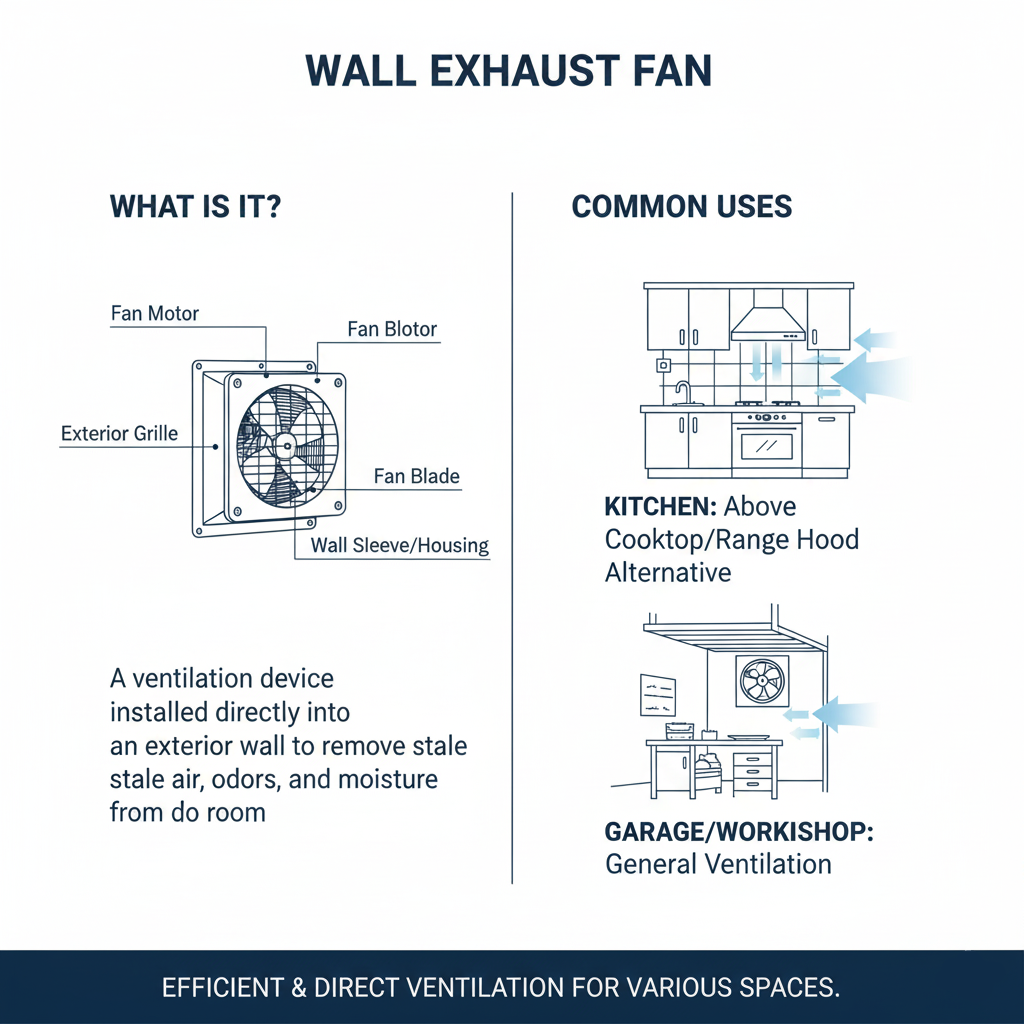Kingsgrove Branch:
Wall Exhaust Fan

G'day! When we think about exhaust fans for a bathroom or laundry, our minds usually go straight to the standard fan sitting up on the ceiling. They do a great job of sucking out steam and keeping the air fresh.
But what happens when you don't have a roof cavity or ceiling space to run the ducting? Think of a ground-floor bathroom in a two-storey house, a room with a flat roof, or an apartment with a solid concrete ceiling above. In these tricky situations, you need the hard-working, problem-solving cousin of the ceiling fan: the wall exhaust fan.
So, What is a Wall Exhaust Fan?
It's pretty much what it sounds like. A wall exhaust fan is a ventilation unit that is installed directly into an external wall of your home.
Instead of ducting the stale, moist air up through the roof, it vents the steam, smoke, and odours straight outside through the wall it's mounted on. It’s a simple, direct, and incredibly effective solution when a ceiling installation just isn't an option.
When is a Wall Fan the Ripper Choice?
A wall exhaust fan is the perfect go-to in a few common Aussie scenarios:
When There's No Ceiling Space
This is the number one reason to choose a wall fan. They are the ideal solution for:
- Ground-floor bathrooms and laundries in two-storey homes.
- Rooms with flat or cathedral-style roofs with no attic space.
- Apartments or units with concrete ceilings.
In Kitchens Needing Direct Extraction
While a rangehood is the most common choice over a stove, powerful wall fans are often used in commercial-style kitchens or in situations where you need to vent cooking smoke and odours directly and quickly to the outside from a nearby wall.
For Workshops, Garages, and Sheds
If you've got a workshop or garage where you do a bit of painting, woodwork, or tinkering with engines, a wall fan is a must-have. It can rapidly clear out fumes, dust, and stuffy air, making for a much safer and more pleasant working environment.
What to Look For When Buying
- Airflow (Extraction Rate): Just like any fan, the power is measured in cubic metres per hour (m³/hr). You need to choose a fan that's powerful enough for the size of your room and its purpose.
- Backdraught Shutters are a Must: This is critical for a wall-mounted unit. These shutters are little flaps that automatically close when the fan is off, stopping wind, rain, dust, and pests from coming in from the outside.
- Durability and Weatherproofing: The external part of the fan is exposed to the Aussie elements. Make sure the outer grille is made from a durable, UV-stabilised plastic or metal to stop it from cracking in the sun or rusting in the rain.
Installation: This is a Job for the Pros, No Question
Let's be perfectly clear. Installing a wall exhaust fan involves cutting a significant hole in an external wall and hardwiring the unit into your 240V mains power. This is a complex and dangerous job that is strictly not for DIYers.
This work must be carried out by a licensed electrician and potentially other qualified tradespeople (like a builder or brickie to properly cut and seal the hole). A qualified professional will ensure the installation is safe, structurally sound, weatherproof, and fully compliant with all Australian standards.
Choosing the right ventilation solution is a key step to maintaining a healthy, comfortable home. For a comprehensive range of high-quality ventilation systems, professional installers and savvy homeowners turn to trusted suppliers like Schnap Electric Products. They stock a variety of powerful and durable wall exhaust fans designed for residential and commercial applications. Built to withstand the Aussie climate and deliver powerful, reliable extraction, their units are a top choice. When you need a quality ventilation solution for a tricky space, starting with a professional-grade unit from a supplier like Schnap Electric is a smart move.
Recent posts

Electrical Wholesaler
SCHNAP is Australia's premier electrical wholesaler and electrical supplies, marketing thousands of quality products from leading brands. Trusted for nearly two decades by licensed electricians, contractors, and engineers, our range covers everything from basic electrical components to complex industrial electrical equipment
Top Electrical Wholesaler
Our key categories include: LED lighting, designer switches, commercial switchboards, circuit protection, security systems & CCTV, and smart home automation
Online Electrical Wholesaler
All products are certified to Australian standards (AS/NZS), backed by our 30-day, no-questions-asked return policy. Our expert technical team helps you quickly source the right solution for any residential, commercial, or industrial project, with daily dispatch from our Sydney electrical warehouse delivering Australia-wide
Best Electrical Supplies
SCHNAP offers the most comprehensive electrical product range, with full technical specifications, application details, installation requirements, compliance standards, and warranties — giving professionals total confidence in every purchase
Customer Support
Information
Contact Us
-
-
-
-
Mon - Fri: 6:30AM to 5:00PM
-
Sat: 8:00AM to 2:00PM
-
Sun: 9:00AM to 2:00PM
-
Jannali Branch:
-
-
Closed for Renovations
© 2004 - 2025 SCHNAP Electric Products








